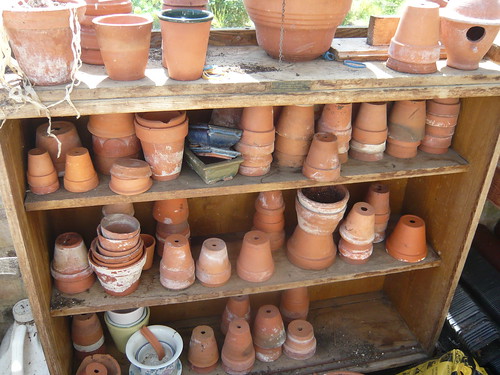Clay or Plastic Plant Pots
Posted: June 30th, 2011 | Author: hortoris | Filed under: Growing Aids | No Comments »Some plants thrive best in plant pots. Others need pots to help them through their juvenile life until they can be planted out into a permanent position in the garden.
Uses of Plant Pots
- Pots are a good medium for containing, selling and transporting plants. Garden centers couldn’t function without them and nurseries nowadays only sell a small number of bare rooted plants.
- Pots protect and enable plants to develop good root system.
- Pots can be the final home for some plants and be used in a decorative manner.
- Houseplants are invariably housed in a pot of some description.
Clay Pots
- Terracotta pots made from fired clay are the pots old gardeners had to use.
- Clay pots are porous and allow water and air to move within the compost.
- Water evaporation from the sides is slow but helps keep the pot and soil cool.
- Clay pots can be heavy and well balanced so shouldn’t be blown over.
- Clay pots tend to dry out quicker than other pots and watering needs must be considered.
- Some plants such as Auriculas, love the conditions of clay pots.
- Glazed pots are usually earthen ware or some form of clay pot.
Plastic Pots
- These are cheap to manufacture, available in many sizes and light to carry.
- Black flexible plastic is used for larger pots. Brittle plastic seems to be used for small 3″ and similar pots.
- Plastic pots are easy to clean with a disinfectant. Pots can be reused many time and last several seasons.
- Plastic pots tend to breed and if you end up with a surplus they are not recyclable.
- Plastic pots rely on the compost to control the watering and moisture level.
- Roots do not adhere to the sides of the pot as they may do with clay pots.
Related article Tips for Planting Summer Pots

Leave a Reply